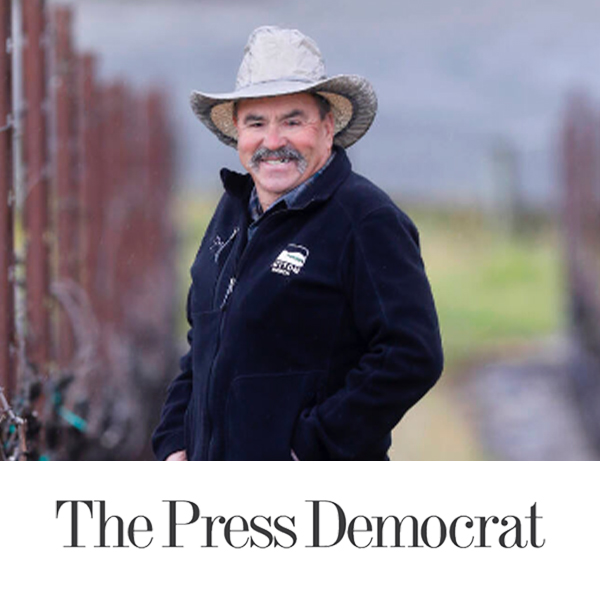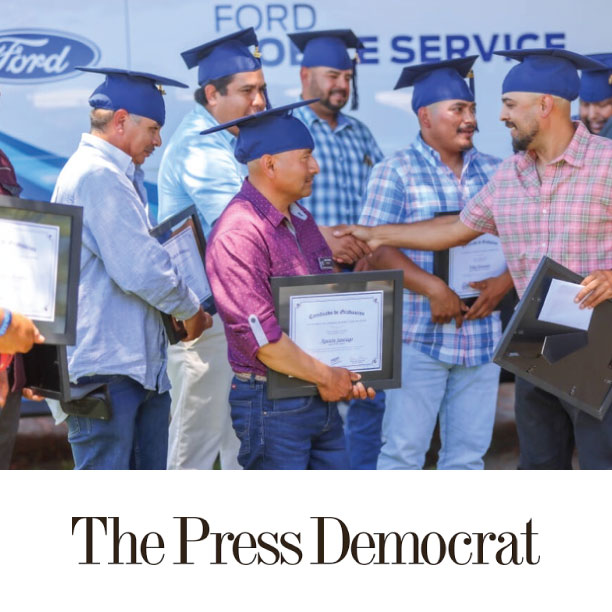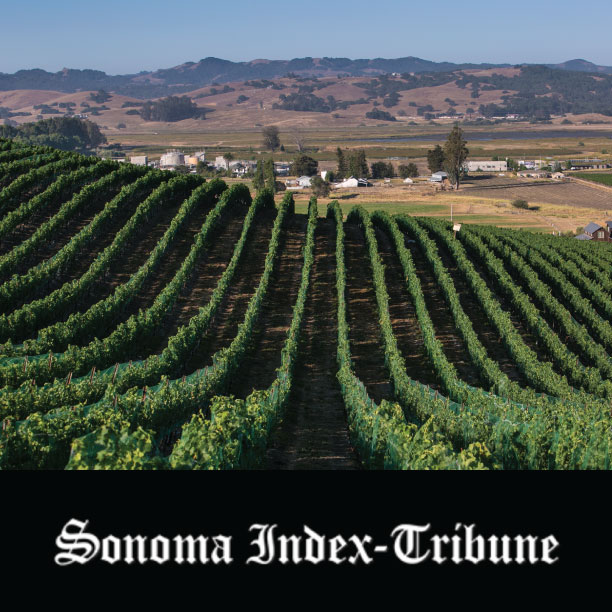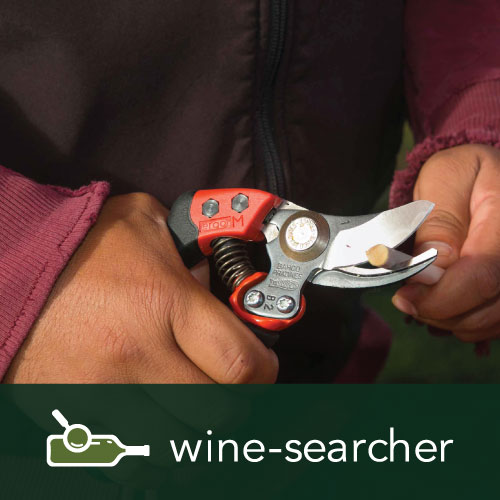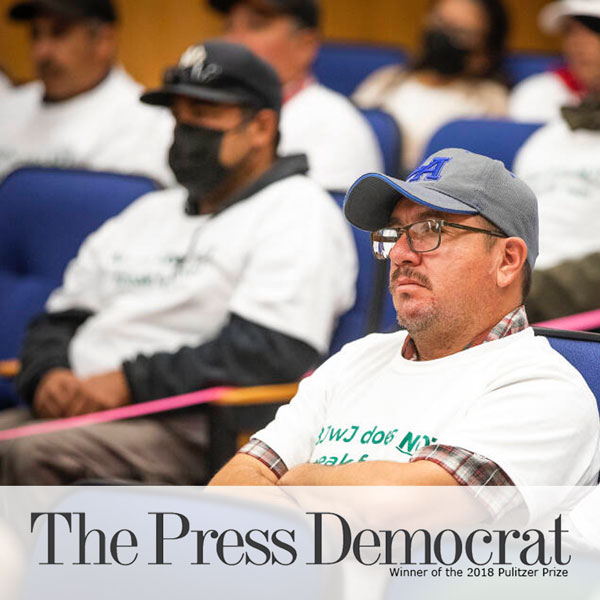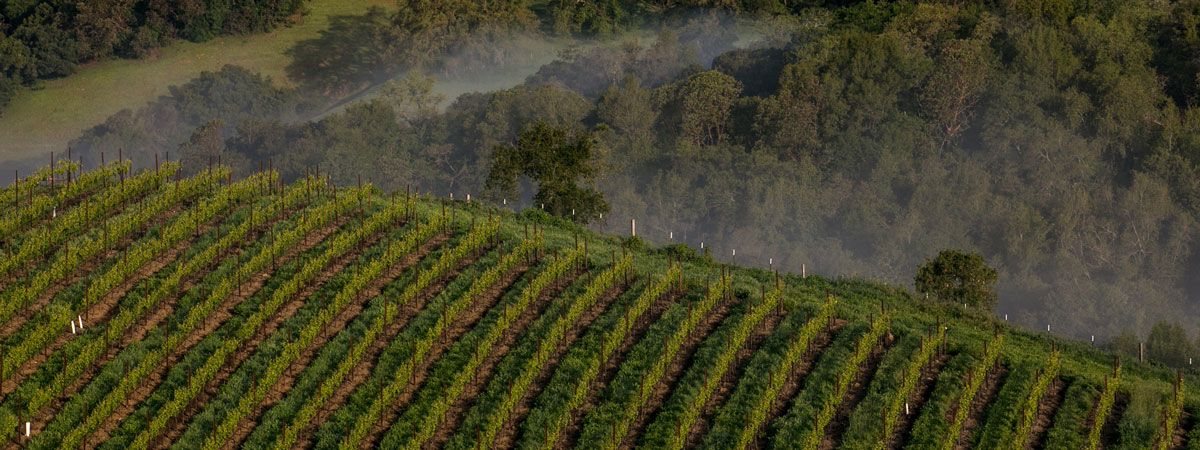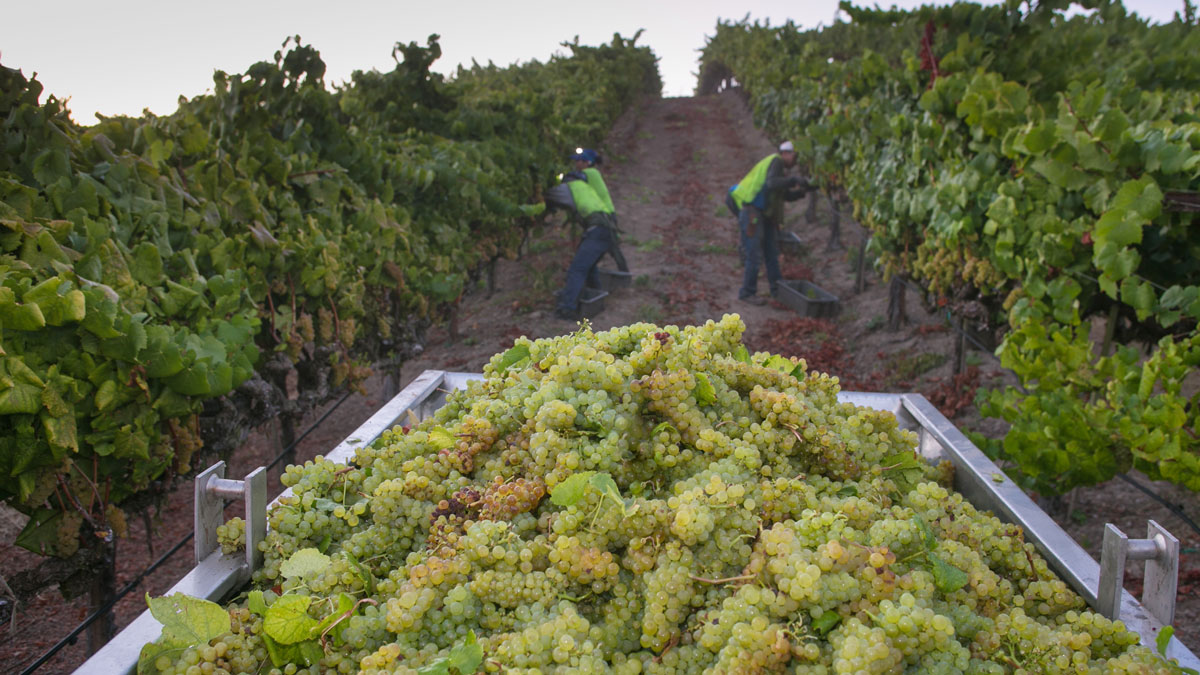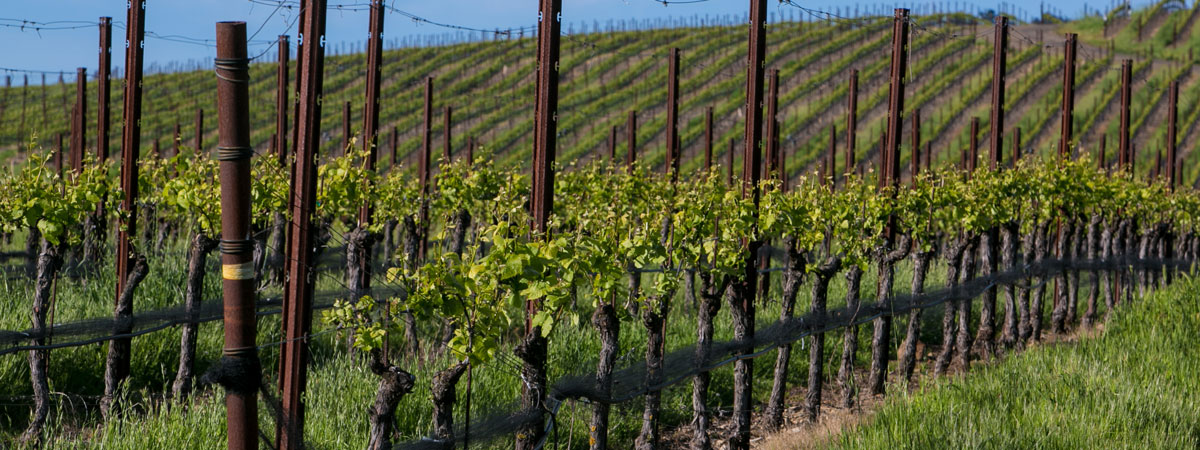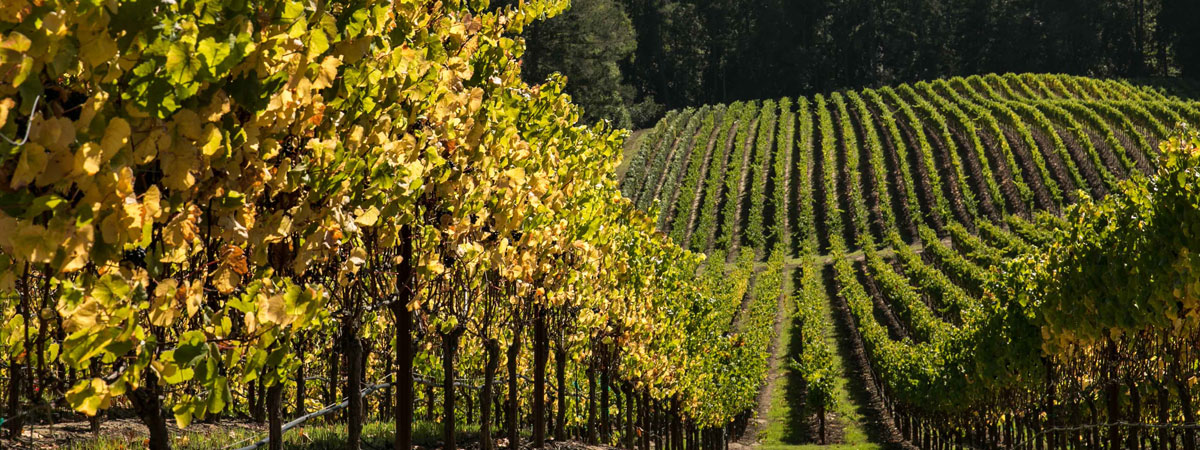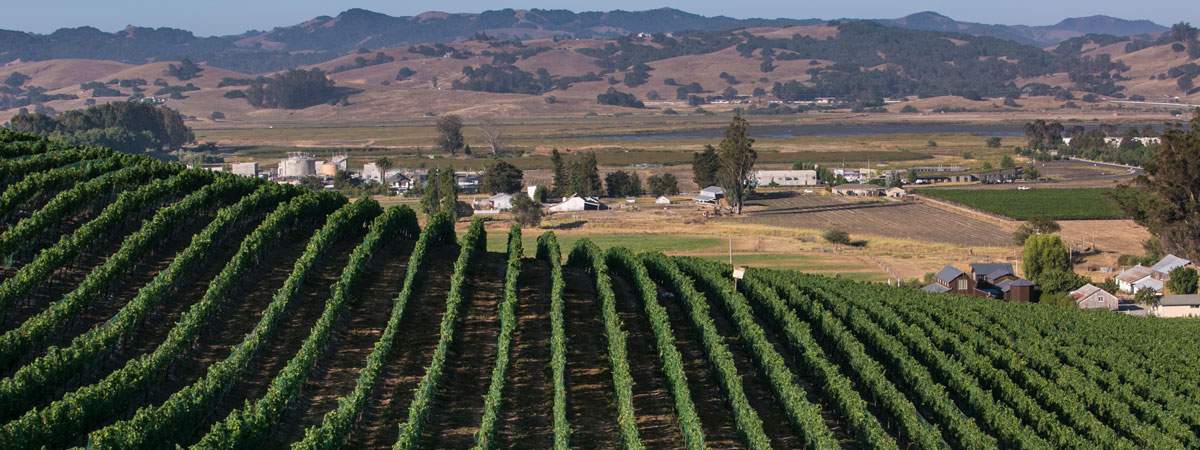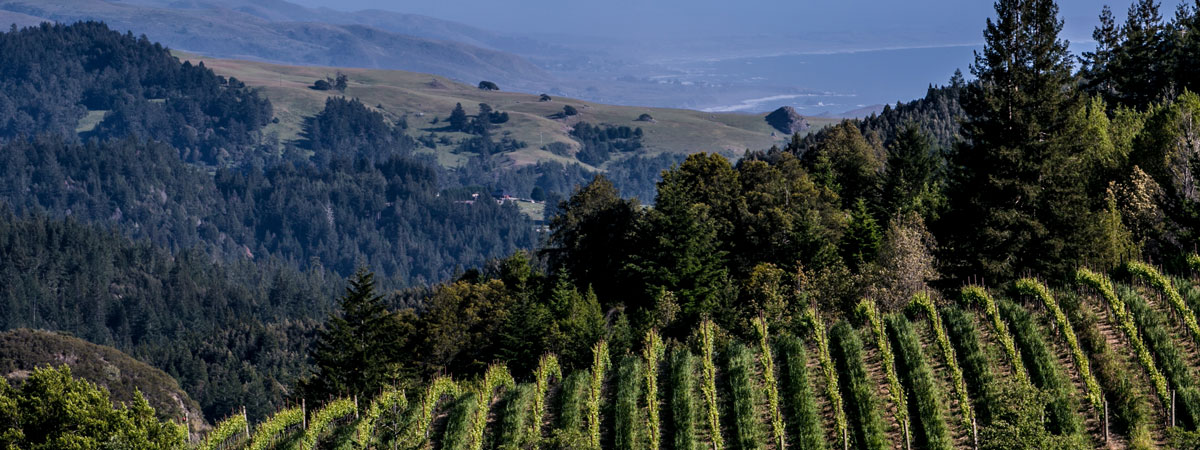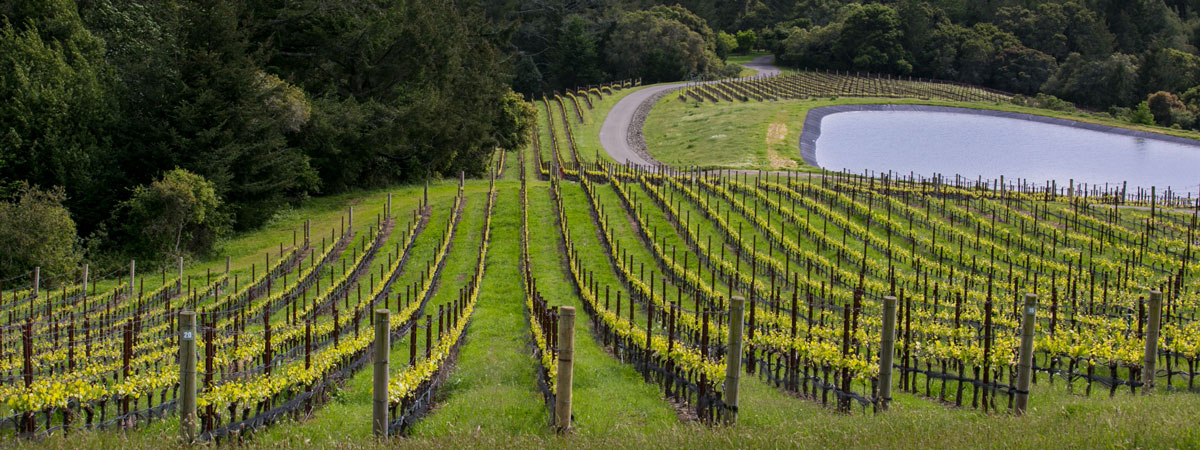stands for the Sonoma Wine Industry for Safe Employees, and it represents the region’s wine community. We are a resource for interested people to learn more about Sonoma County’s wine community, our commitment as responsible employers, and our role as stewards of the land. We invite you to visit this page regularly and learn more about the people who grow, harvest, and make wines that are renowned around the world and our commitment to our local community.
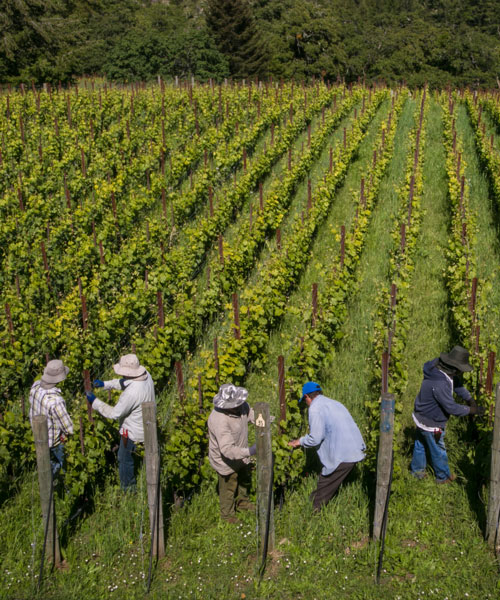
About 
Sonoma County winegrowers are predominantly family farmers who, together, employ approximately 6,000 full-time vineyard employees. While Sonoma County encompasses more than 1 million acres of land, only 60,000 acres are planted to vineyards which accounts for only 6% of Sonoma County’s total acreage. Sonoma County is comprised of many small farms, with more than 40% of Sonoma County’s vineyard parcels less than 20 acres in size and 80% of the county’s vineyards less than 100 acres. Sonoma County is the most sustainable winegrowing region in the country, with 99% of its vineyard acreage certified sustainable, making it a global leader in sustainable winegrowing. This commitment ensures that the region’s local vineyard and wineries not only strengthen the local economy and provide jobs to improve our quality of life but also preserve open space and protect land from urban encroachment for generations to come.
We deeply value our relationships with our vineyard employees. Together, we are stewards of the land, providing for our families, contributing to our communities, maintaining open space, and sustaining our farms and ranches for generations to come.
-
Committed to Health and Safety
The health and safety of our employees are our top priorities each and every day. This is why we provide safety training to our employees throughout the year, covering a variety of topics, including wildfire safety and preparedness. From property risk assessments to evacuation procedures and more, fire preparedness is constantly emphasized. During fires, only firefighting personnel and first responders can access a fire zone (an area determined by Cal-Fire to have an uncontrolled or destructive fire burning or the land is in the path that the fire is expected to burn). The evacuation zone can be several miles from the fire and the fire zone. Locally, only the Sonoma County Sheriff’s Department can provide access to an evacuation zone if they deem it can be safely done without any risk of injury or harm. As farmers, our focus is simple: if the county determines it is not safe to access vineyards in an evacuation zone, we simply do not go into those areas and wait until the county verifies it to be safe. In addition, we provide all our employees with access to N95 masks, protective eyewear, and additional personal protective equipment.
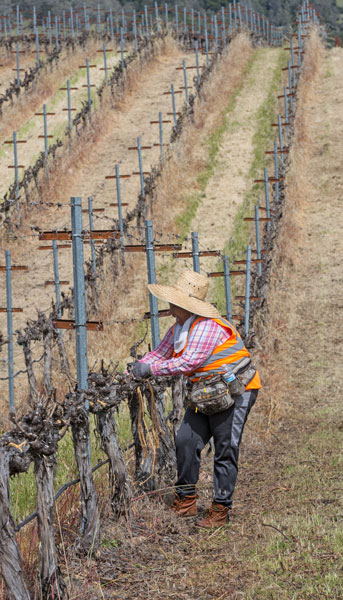
-
Communication is Key
We will never put our employees in danger which is also why all trainings, materials, and related announcements are provided and communicated in both English and Spanish, so everyone fully understands the information. On a regular basis, we will conduct meetings with all our vineyard employees to ensure they are fully aware of the information being shared. We believe our efforts not only reduce the risk of fires on our properties to protect our employees and neighbors but also provide an effective means to safeguard the people, communities, and land where we work and live. Communication is critical, which is why we take the time to make sure everyone, regardless of their native language, fully understands. Some have suggested that all written materials should be translated to indigenous languages, however, these unique languages are primarily oral languages making it impossible to translate. Also, the fact is Indigenous workers are few in number and, typically, Spanish speaking employees are able to translate safety instructions and related communications to them. These are some of the reasons why both the federal and state government require written information to be available in both English and Spanish.
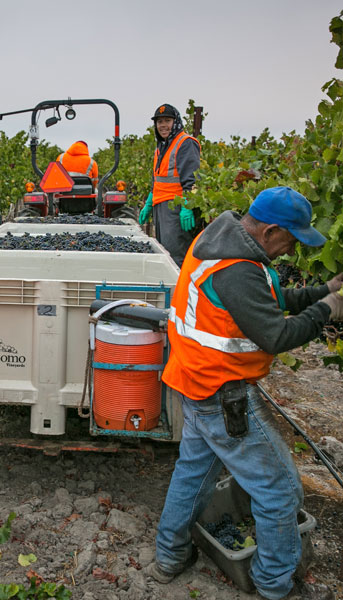
-
Risking It All Against Mother Nature
Given that agriculture will always be directly impacted by the whims of Mother Nature, the federal government offers crop insurance policies for farmers and ranchers to voluntarily purchase. Crop insurance is designed to ensure some financial assistance is available to policyholders when it is needed most, should their farm or ranch be negatively impacted by extraordinary events such as wildfires, frosts, storms, or floods. However, crop insurance does not pay a grower or rancher for all their costs in the event of a disaster. On average, a policy will pay between 30% to 80% of the anticipated income from the lost crop. This means the insurance reimbursement only offsets some of the production costs that a grower, who has paid for crop insurance, incurred that year. Because of this and the fact that the cost of crop insurance is an additional expense for a business, some farmers and ranchers choose not to purchase it. Regardless, all farmers and ranchers, whether they have crop insurance or not, pay expenses including wages, property taxes, equipment, materials, and related, throughout the year even if they do not get paid for the crop. Only when their crop is harvested, does a farmer get paid while they pay their employees, including their vineyard employees, throughout the year, thereby, protecting their employees from catastrophic financial loss.
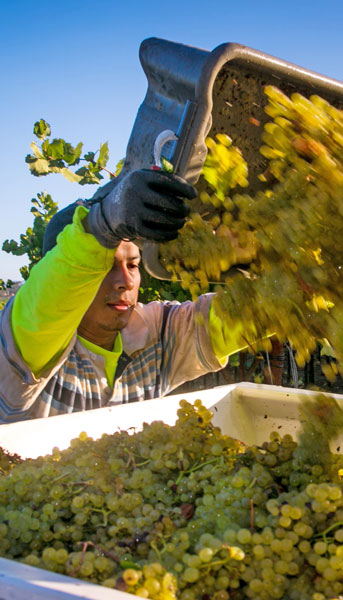
-
Safe and Secure
Since 9/11, a number of laws and regulations have been enacted to protect consumers by securing our nation’s food supply to guard against acts of terrorism. It was determined long ago that one of the keys to protection is prohibiting public access where food is grown and processed. Today, farmers and ranchers must comply with a variety of requirements, including the United States Patriot Act, California food safety protocols, and COVID protocols throughout the year. Due to these laws and regulations, public access to private property is not allowed at any time, but especially during a fire or at harvest time. Additionally, having members of the public on a farm or ranch during a wildfire would create chaos. Chaos creates dangerous conditions, and dangerous conditions can result in accidents and even death.
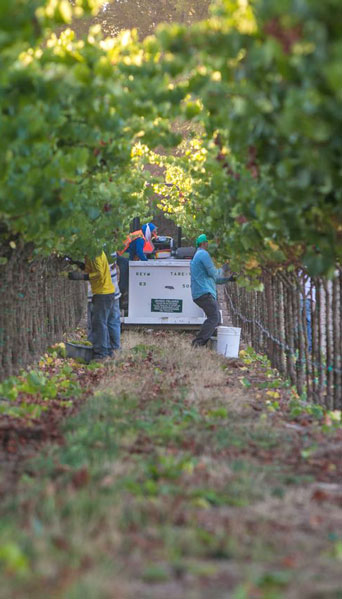
-
Premium Pay for Skilled Vineyard Employees
Sonoma County winegrapes are highly prized, and it takes great skill and expertise to cultivate and consistently produce such premium grapes. Our local winegrowers have long been committed to supporting our skilled vineyard employees and their families to sustain farming in Sonoma County. Local winegrowers have been paying above minimum wage to vineyard employees since the 1980s. In fact, the current average hourly wage for vineyard employees is $19.87 per hour throughout the year, and it can be as high as $30 to $40 an hour during harvest. In addition, more than 90% of our vineyard employees are full-time workers. On average, our local vineyard employees have worked for the same farming family or manager for more than 15 years. More than 40% of our local vineyard employees are provided with free housing or at reduced costs from their employer.
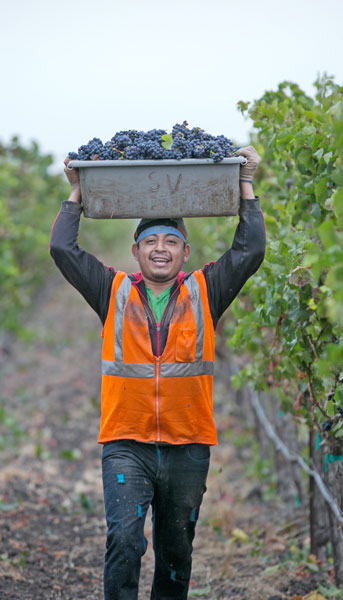
Facts About Sonoma County Vineyard Employees
There are more than 6,800 vineyard employees working in Sonoma County. Of that, 6,139 are full-time employees. This equates to 90% of the vineyard employee workforce being employed full-time. The remaining workforce, about 670 individuals, are seasonal or day laborers. Just five years ago, in 2017, there were 5,186 full-time vineyard employees and 2,644 seasonal or day laborers.
In the summer of 2021, the Sonoma County Grape Growers Foundation conducted a survey of Sonoma County’s vineyard workforce which was the largest survey ever conducted of vineyard employees in California. The purpose of the survey was to identify and understand the challenges and needs of the vineyard employees and their families. The response to the survey was significant with 965 full-time vineyard employees participating, which is more than 15% of the local vineyard employee workforce.
Employed full-time. They are not part-time, seasonal employees or day laborers.
Respondents stating they received support from the Foundation.
Respondents who have been with the same employer for more than 20 years.
Respondents would recommend working in agriculture to their family and friends.
- The full-time vineyard workforce in Sonoma County is approximately 6,000 employees, which are roughly 5.6% of the Latino population in the County.
- The survey specifically asked participants which local organizations the vineyard employees were aware of and have sought support from.
- The Sonoma County Grape Grower Foundation was ranked as the most popular choice for vineyard employees with more than 45% of the respondents stating they received support from the Foundation.
- The Sonoma County Grape Grower Foundation has provided more than $1.5 million in support directly to vineyard and agricultural employees in the region since 2017 to help them during the recent wildfires and pandemic.
- Other key findings of the Foundation’s survey include all responding local vineyard employees, on average, have worked for the same Sonoma County farming family or farm manager for more than 10 years. More than 20% of the respondents have been with the same employer for more than 20 years.
- More than 40% of the respondents stated they are receiving free housing or getting housing support from their employer. This is an increase from 30% receiving housing support just five years ago (2017).
- The average rate of pay for vineyard employees in Sonoma County is $19.87 per hour, which is an increase of $3.13 since 2017. Wages for vineyard employees in Sonoma County during harvest can be as high as $30–$40 per hour.
- According to the responses, vineyard employees truly like working in agriculture and more than 90% of the respondents would recommend working in agriculture to their family and friends.
- The top three reasons why they like working in agriculture are 1) they enjoy farming (75%), 2) they like working outside (40%), and 3) they grew up on a farm (28%).
- The survey asked the participants if they spoke any of 23 Indigenous languages in addition to English and Spanish. Only five participants out of the 965 responses indicated that Mixteco or Chatino was their primary language.
- Through follow-up, it was discovered that those 5 individuals speaking an Indigenous language partnered with colleagues who were fluent in those languages and Spanish to provide any necessary translation services.
Supporting our Community
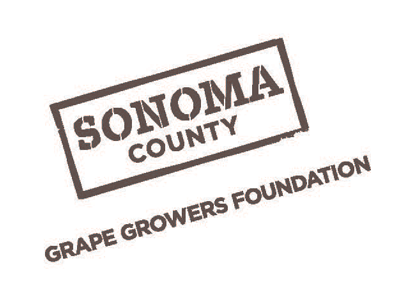 As the nation’s most sustainable winegrowing region, Sonoma’s wine community strongly supports the community where we work and live. Throughout the year, we will highlight various programs and efforts we support in Sonoma County. At this time, we want to call attention to and celebrate the Sonoma County Grape Growers Foundation. The Sonoma County Grape Growers Foundation is the only non-profit in the region with the sole mission to support vineyard employees and their families. It was first established in 2002 by local winegrape growers to help fund educational workshops in Spanish. Relaunched in 2016, the Foundation’s focus has expanded to improve the lives of Sonoma County’s agricultural employees and their families while ensuring the County remains a place where agricultural employees will continue to live, work and thrive. Following the devastating fires of 2017, 2019 and 2020, the Foundation established a Wildfire Housing Support Fund, which has provided $1.5 million in support to approximately 1,500 agricultural employees with temporary housing, rent support and provided gift cards to purchase household items, food and supplies.
As the nation’s most sustainable winegrowing region, Sonoma’s wine community strongly supports the community where we work and live. Throughout the year, we will highlight various programs and efforts we support in Sonoma County. At this time, we want to call attention to and celebrate the Sonoma County Grape Growers Foundation. The Sonoma County Grape Growers Foundation is the only non-profit in the region with the sole mission to support vineyard employees and their families. It was first established in 2002 by local winegrape growers to help fund educational workshops in Spanish. Relaunched in 2016, the Foundation’s focus has expanded to improve the lives of Sonoma County’s agricultural employees and their families while ensuring the County remains a place where agricultural employees will continue to live, work and thrive. Following the devastating fires of 2017, 2019 and 2020, the Foundation established a Wildfire Housing Support Fund, which has provided $1.5 million in support to approximately 1,500 agricultural employees with temporary housing, rent support and provided gift cards to purchase household items, food and supplies.
This support effort was expanded to provide financial assistance throughout the COVID pandemic. The Foundation, along with other local groups, including Sonoma County’s winegrape farmers, vintners, and health communities, successfully partnered to schedule appointments and vaccinate essential workers throughout the region to conduct hundreds of COVID-19 vaccinations each week. In all, more than 95% of the vineyard employees were vaccinated within the first three months of the vaccination rollout. In addition to organizing the vaccine rollout for essential ag employees, the Sonoma County Grape Growers Foundation also donated funding to each of the healthcare community organizations involved to help cover day-to-day expenses related to the program.
Regardless of the need, the Sonoma County Grape Growers Foundation has never denied a vineyard employee’s request for financial assistance.
Earlier this year, the Foundation launched an innovative leadership program for vineyard employees designed to create future leaders. The Richard and Saralee Kunde Leadership Academy will provide participants with a unique opportunity to learn more about a host of topics, including financial literacy, conflict resolution, community resources, and more. The intent of this innovative program is to provide critical professional development that will propel vineyard employees to become leaders in the community and the wine industry. The Leadership Academy is the natural next step that builds on the Employee Recognition Program, which has been a flagship of the Sonoma County Grape Growers Foundation since 2018.
Making News
